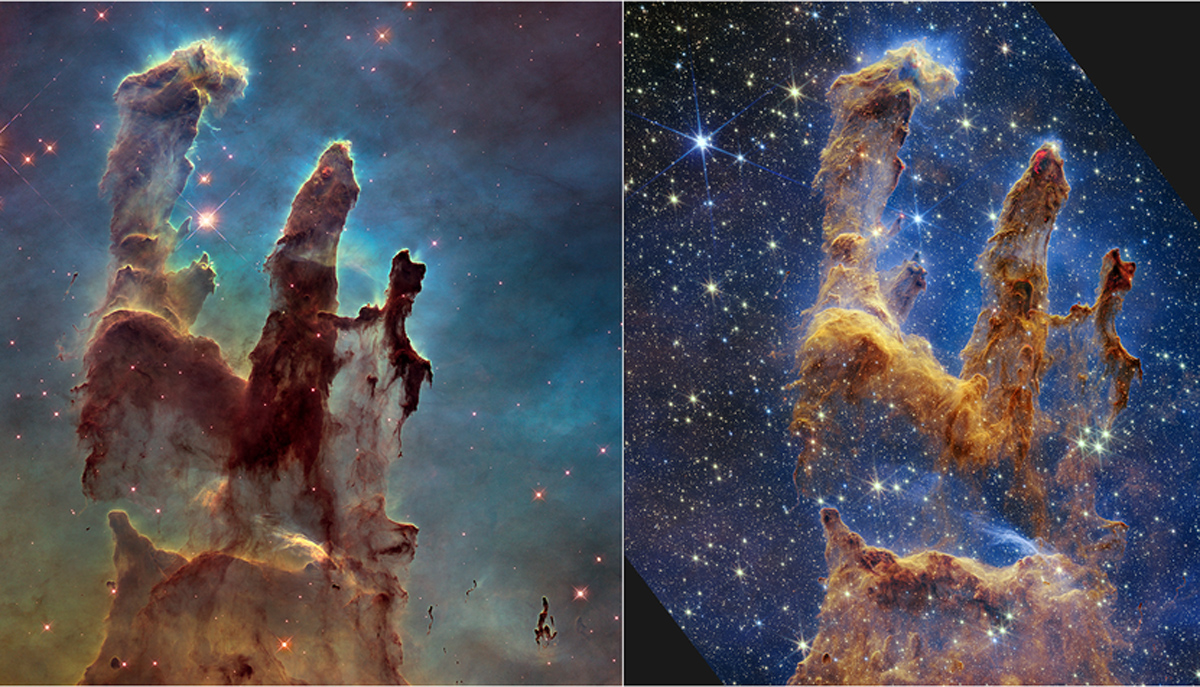James Webb Space Telescope hailed as the greatest science breakthrough of 2022

It's been a triumphant year for the James Webb Space Telescope. From a flawless launch on Christmas Day 2021, through a perfectly executed deployment sequence, to early images that took everybody's breath away, the $10 billion space observatory has been exceeding expectations every step of the way — so much so that critics quickly forgot about the years of delays and massive cost overruns. Now, two of the world's most prestigious science journals cement the James Webb Space Telescope position as "the science thing of the year."
Editors of the journal Science selected the James Webb Space Telescope from a pool of candidates, which also included NASA's asteroid-deflection mission DART, as the Science Breakthrough of 2022. In addition, Science's competitor Nature included Webb's Operations Project Scientist Jane Rigby among its "10 people who helped to shape science stories" of 2022. (Earlier this year, Time Magazine dubbed the telescope one of the best inventions of the year.)
In a statement accompanying the announcement, Science praised Webb for allowing researchers to reveal the universe's "unfathomable past in stunning, unprecedented detail."
Gallery: James Webb Space Telescope's 1st photos
"Within days of [the telescope] coming online in late June 2022, researchers began discovering thousands of new galaxies more distant and ancient than any previously documented — some perhaps more than 150 million years older than the oldest identified by Hubble," Science wrote. "What's more, the telescope is capable of collecting enough light from astronomical objects — ranging from birthing stars to exoplanets — to reveal what they are made of and how they are moving through space. This data has already begun to reveal the atmospheric composition of planets hundreds of light-years from Earth in great detail, offering hints as to their ability to potentially support life as we know it."
Since the release of its first images in mid-July, Webb has been providing a steady stream of awe-inspiring views of the universe that continued breaking the internet. The telescope reimaged some of the famous objects previously photographed by its predecessor, the Hubble Space Telescope, and revealed mind-boggling details that were previously hidden.
Orbiting the so-called Lagrange point 2, a spot some 900,000 miles (1.5 million kilometers) from Earth away from the sun, Webb is carefully shielded from the sun's glare. That protection is crucial for the telescope's ability to detect the faintest infrared signal, essentially heat, coming from the depths of the universe and from within thick clouds of cosmic dust that obscure the view of optical telescopes, such as Hubble.
Breaking space news, the latest updates on rocket launches, skywatching events and more!

Webb's sensitive instruments, built to detect the earliest galaxies that formed in the universe in the first hundreds of millions of years after the Big Bang, have been consistently outperforming expectations. Less than six months after the first images were released, astronomers were able to confirm that the observatory saw objects more than 13.4 billion light-years away, those existing in the era when the universe was only 350 million years old. Webb also revealed bursts of star formation inside the cloudy Pillars of Creation, and detected traces of carbon dioxide in the atmosphere of an exoplanet, among many other discoveries.
Among other projects that Science considered for the accolade was a discovery of a giant microbe, nearly 5,000 more massive than most known bacterial cells, the development of a multi-year variety of rice, and an analysis of how medieval plague epidemics affected the DNA of Europeans.
NASA's DART mission, which slammed into a small asteroid called Dimorphos in September to alter its orbit, also made the list.
Follow Tereza Pultarova on Twitter @TerezaPultarova. Follow us on Twitter @Spacedotcom and on Facebook.

Tereza is a London-based science and technology journalist, aspiring fiction writer and amateur gymnast. Originally from Prague, the Czech Republic, she spent the first seven years of her career working as a reporter, script-writer and presenter for various TV programmes of the Czech Public Service Television. She later took a career break to pursue further education and added a Master's in Science from the International Space University, France, to her Bachelor's in Journalism and Master's in Cultural Anthropology from Prague's Charles University. She worked as a reporter at the Engineering and Technology magazine, freelanced for a range of publications including Live Science, Space.com, Professional Engineering, Via Satellite and Space News and served as a maternity cover science editor at the European Space Agency.
